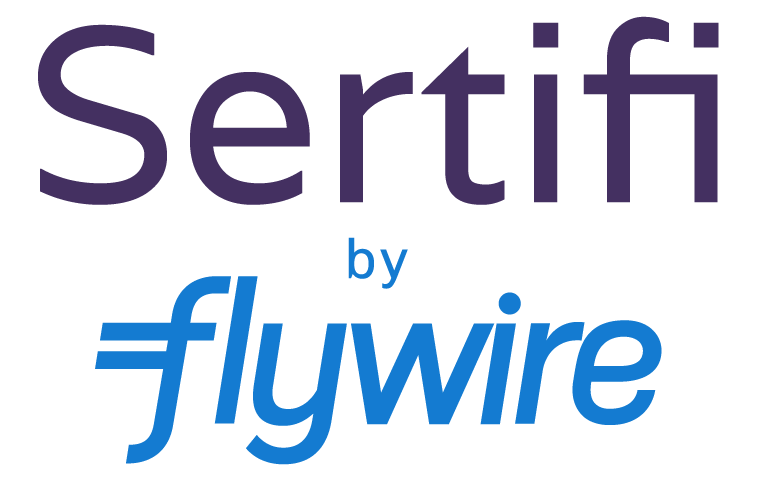ACH payments are electronic transfers of money between banks through the Automated Clearing House network. Common use cases include payroll direct deposits, tax refunds, social security benefit payouts, and more.
Hotel payment processing: ACH guide
Still not accepting ACH eCheck payments as a card alternative? This guide covers all the reasons you should (including how easy it is to get started).
First, let's cover the basics...
How does someone pay you via ACH?
-
Initiation of Payment: The entity initiating the payment provides their bank with the necessary information, including the recipient's bank account details, the amount to be transferred, and any relevant payment details.
-
Originating Depository Financial Institution (ODFI): The initiating entity's bank is known as the Originating Depository Financial Institution (ODFI). The ODFI submits the payment information to the ACH network, typically in batches.
-
ACH Network Processing: The ACH network processes these batches of transactions in scheduled windows, usually multiple times a day, and routes the transactions based on the receiving banks (RDFI) involved.
-
Receiving Depository Financial Institution (RDFI): The recipient's bank is called the Receiving Depository Financial Institution (RDFI). The ACH network forwards the payment information to the RDFI, which then credits the recipient's account.
-
Transaction Posting: The RDFI posts the transaction to the recipient's account, making the funds available.
-
Notification: The recipient may receive a notification, such as an email or bank statement entry, indicating the deposit.
Is an ACH transfer a direct deposit?
Yes, a direct deposit is a type of ACH transfer. For example, when your employer deposits your paycheck directly into your bank account.
Is an ACH payment a wire transfer?
No, ACH payments and wire transfers are different methods of moving money electronically.
ACH transactions are processed in batches, usually in predefined daily cycles. In contrast, wire transfers are often processed individually and in real-time, oftentimes used for time-sensitive transactions.
Additionally, ACH transfers are primarily used for domestic transactions within the United States. Wire transfers can be used for both domestic and international transactions.
While wire transfers are typically faster, they are more expensive than ACH payments.
What are the types of ACH payments?
ACH payments are categorized into two types:
-
ACH Debits: Transactions initiated to pull funds from another account, i.e., debits where money is taken from your account.
-
ACH Credits: Transactions initiated to push funds into another account, i.e., credits where money is deposited into your account.
The ACH network is managed by the National Automated Clearing House Association (NACHA). NACHA ensures smooth and secure electronic fund transfers between banks by establishing the rules and standards that financial institutions must follow when processing ACH transactions. They also work to improve and expand the ACH network's capabilities.
Now the fun part: why you and your customers will love ACH payments...
Serious cost savings
✅ Lower transaction costs
The fees associated with ACH payments are lower than card processing fees (.5% for ACH compared to 3% or higher for cards). ACH transactions are also more cost-effective than traditional paper-based transactions or wire transfers.
✅ Reduced processing time
For the customers who prefer bank transactions, ACH payments clear much faster than traditional paper checks. ACH payments are also typically more accurate and have fewer errors compared to manual check processing.
✅ Minimized manual processes
ACH payments can be automated, saving you time and resources that would otherwise be spent on manual data entry and reconciliation.
Increased security
✅ Secure networks
Financial institutions invest in robust infrastructure to maintain the security of their electronic payment systems. Therefore, ACH transactions take place over secure networks, ensuring the protection of the information being transferred.
✅ Encryption
ACH transactions are typically encrypted to protect the sensitive information being transmitted, reducing the risk of interception by unauthorized parties.
✅ Authentication
ACH transactions often involve authentication measures to verify the identity of the parties involved. This may include password protection, multi-factor authentication, and other security measures implemented by banks and financial institutions.
✅ Fraud monitoring
Financial institutions actively monitor ACH transactions for signs of unusual or fraudulent activity. Automated systems can detect patterns that may indicate unauthorized access or fraudulent transactions, helping to prevent and mitigate potential risks.
✅ Regulatory compliance
The ACH network operates under strict regulatory standards and guidelines. Compliance with these regulations helps ensure that financial institutions follow security protocols and adhere to best practices for protecting information.
✅ Limited access
Access to ACH transactions is restricted to authorized entities, reducing the risk of unauthorized individuals gaining access to sensitive financial data.
Customer convenience
Some customers simply prefer paying directly from their bank accounts. For example, they may not want to incur credit card fees. Offering payment flexibility via ACH payments lets them pay quickly and hassle-free, reducing your risk for delayed payments.
Get paid faster with Sertifi's hotel payment solutions.
Simplify selling by electronically capturing payments and agreement e-signatures from one secure platform. Behind the scenes, SertifiPay processes payments in a fast, PCI-compliant manner at a lower cost to you. Our customers have saved up to $175k a year in processing fees.


